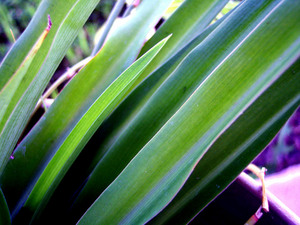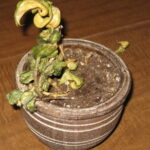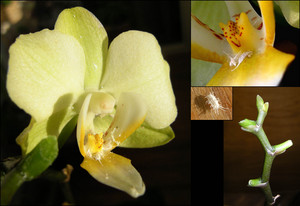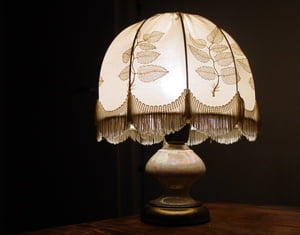Indoor office plants or houseplants require different care than outdoor plants. There are generally a few guidelines to follow when caring for interior plants. For more specific care information you will need to take a closer look at the specific type of plant you own.
Environment Selection and Modification
The plant’s immediate environment is going to greatly affect whether or not the plant thrives. This environment includes the lighting, temperature, and humidity levels surrounding the plant. Your goal is to try to match the office environment to the environment from which a plant came from. You more than likely can’t make your office an exact replica of the plant’s originating environment, but every effort and step you take keeps your office plant that much healthier and happier.
Lighting
When you choose an indoor plant, always go with something low-maintenance that doesn’t need a large source of sunlight. The exception is if there is a window available that can provide the plant with a consistent amount of sunlight. The direction of the windows in your office will affect the intensity of the sunlight received by your plants as well. Windows that face the south give the most intense light and are the warmest. Light colored surfaces in your office will also increase light intensity. Windows that face north give the least amount of intensity and are also the coolest. Dark surfaces in the office also lessen light intensity. For plants requiring medium light, choose a location near an east window or in front of a west window. Rotate the plant every few days so that all sides get a chance to catch some rays. There is also the option of using artificial grow lights if a plant needs more sunlight than you can provide. Remember, plants do need some darkness to grow properly. Too much light can be as hurtful as not enough light. You should do a little research to determine just how much light your office plant requires.
Temperature
Most office plants can withstand normal temperature changes. These plants normally do best in temperatures between 70°F and 80°F during the day and 60°F to 70°F at night. Lower temperatures help the plant to recover from moisture loss and prolong your plants life. Some indoor plants are sensitive to and harmed by heavy drafts and heat. An occasional breeze however won’t do any damage. Don’t place your plants in a sunny window. This exposes your plants to temperature extremes as the sun heats during the day and the cold sets in through the window at night.
Humidity
Humidity refers to the amount of moisture in the air. Dry air overworks a plant’s root system and could damage or even kill a plant. If possible, you might want to increase the humidity level in your office to maintain a healthy plant. One way to accomplish this is by using a humidifier. You might also place gravel trays under the flower pot. Misting a plant can add some humidity, especially during the drier months of the year. There are a few plants that don’t tolerate getting their leaves wet however. Investigate to figure out what your plant can tolerate.
Potting
There a many different types of containers out there for you to choose from for your office plant. You want to go with something that is large enough for the roots. It should also allow for bottom drainage. Understand that healthy plants will need to be repotted occasionally. If you see roots growing out of the bottom of the pot, this is a sign you need to repot the plant. Don’t repot a plant in a pot that’s too big however. The best idea is to place your plant in a pot that is one size larger than the original pot. Fill the empty space with potting mix. Even if your plant doesn’t grow much, it should be repotted every couple of years.
Soil
The potting soil you use must be of good quality. You need it to be porous for the roots and drainage but you also need it to be able to retain water and nutrients. Differences in the soil you choose can affect both your plant’s needs and its ability to thrive. You want to go with “potting mix” and not “potting soil” or “garden soil.” Potting mix contains a mixture of peat moss, compost, perlite, and other needed nutrients. These higher quality mixes normally contain slow release fertilizers and are blended to provide optimal drainage and moisture retention. Every couple of years you should replace your plant’s soil since it loses important minerals over time. Also, over time the top layer of soil can become encrusted on your office plant. Loosen it up with a spoon or fork, then remove that top layer and add some fresh soil.
Watering
Generally, when choosing an office plant you should have a plant that doesn’t require frequent watering. With that said, all plants generally need to be watered. You need to water your plant consistently. Establish a watering schedule to give the plants consistency and to help you remember. Try watering every Friday if your plants require weekly soaks. Take a closer look at the needs of your specific type of plant for more specific watering instructions. Over watering and under watering kills plants more than anything else, so you need to know your plants.
There are a few general instructions however. Normally, indoor plants have roots located in the bottom two thirds of the pot. You shouldn’t’ water your plant until the bottom two thirds begins to dry out. To test this, stick your finger in the soil to see if it is damp. If so, don’t water just yet. If it isn’t damp, water the plant until water runs out of the bottom of the pot. This washes out excess salt and guarantees that the soil has been watered all the way through. Dispose of the run-off water. Don’t let the pot sit in this run-off since all of those excess salts will be absorbed back into the soil if you do. You want to keep your soil moist, not wet. This is why knowing your plant is so important. Plants have different needs when it comes to watering. As for the actual water, use tepid water, not cold. You can use tap water, but understand that it probably has chemicals in it your plant doesn’t like such as sodium and chlorine. The chlorine will dissipate if you leave the water out for a day or two however. You might consider using distilled water or captured rainwater to avoid introducing those chemicals into the soil.
Fertilizer or Plant Food
Office plants, like any other plant, need food though some say that indoor plants will do fine without it. Plant food or fertilizer will help your plant to grow healthier, brighter, and larger however. You want the fertilizer to contain nitrogen, phosphoric acid, and potassium. Most commercial fertilizers are sold in granular, crystalline, liquid or tablet forms. When applying fertilizer to a plant, some of the solution should run out of the bottom of the pot. This helps to prevent root burn and the buildup of salts. Apply the fertilizer to the soil every month or so, before a regular watering. It is important to water plants at the same time that you fertilize them. Be mindful when using fertilizers on indoor plants. Too much can actually kill your plant. Nutrient levels become too high if you fertilize too frequently.
Cleaning
Indoor plants don’t get those regular rain washings or wind dustings that outdoor plants do. It is up to you to clean your office plants. Dust, grease, oil and other airborne particles settle on the leaves and make the plant look dull and unattractive over time. Dirty leaves also can’t absorb as much sunlight as clean leaves. Cleaning your plants stimulates growth and helps to control insects while making your plant look its best.
Clean your office plants every month. Do it more often if you live in a dustier area. Use your discretion here. You can clean firm plants with a soft sponge or cloth. Use soft, gentle sponges on your plants. For cloths, cut up an old, clean t-shirt instead of using a paper towel or washcloth. Moisten the sponge or cloth with tepid water. If the plant is really dirty, add a little liquid, non-detergent soap (i.e. Ivory). Support the leaf with one hand and gently use the damp cloth or sponge to wipe the leaf with the other hand. Try to get the top and bottom of each leaf on the plant. Misting also helps to keep plants clean, since it prevents dust buildup. You should not clean plants that have hairy leaves with a sponge or cloth. Use a soft cosmetic brush, a feather duster, or a children’s hairbrush instead.
These guidelines should help you in caring for your indoor office plant. Remember, different plants have different needs. Visit online sites like How Stuff Works: House Plants or www.botany.com for more information on specific plants and how to care for them.







